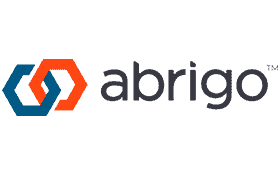Mary Ellen Biery is senior strategist & content manager at Abrigo, a leading provider of risk management, financial crime prevention, and lending software and services. A former equities reporter for Dow Jones Newswires, she is a frequent author in banking publications.

The Math Behind Small Business Lending: Obstacles and Opportunities
Small business lending has financial benefits and risks for banks, but banks can serve this important market while earning appropriate returns.
Brought to you by Abrigo

Small businesses are a pillar of the U.S. economy, and access to financing often plays a crucial role in their survival and success. Lending to these businesses is also a prominent line of business for many financial institutions, especially those driven by a mission to help their communities thrive.
However, small business lending can be costly and time-consuming for banks. Some of the factors that make small business lending a lower-return venture than other types of lending are the same ones that frustrate small business owners.
The Market and Impact of Small Business Lending
Small business lending is nearly a $1.7 trillion market and growing (up 21% from 2019-2022).
Demand for small business financing is driven by many factors, including small businesses’ vital, ongoing role in the U.S. economy. Some additional factors supporting lending opportunities have also emerged:
- Record new business formation.
- A wider gap between establishment birth and death rates compared to the last business cycle.
- The wave of commercial credit needs that’s expected to accompany the next upturn in the economy.
However, banks’ share of small business lending is under pressure. In 2019, depository institutions made up 56% of small business financing. But competition from fintechs and other alternative lenders has grown steadily. By 2021, fintechs captured $25 billion in small business financing, and merchant cash advance companies provided $19 billion. It’s crucial for financial institution leaders to recognize that their dominance in this space is no longer guaranteed.
The Federal Reserve Bank of St. Louis says small business loans below $1 million make up a notable share of community bank assets, including:
- 6% of total assets at community banks with less than $250 million assets.
- 1% of those with assets of $250 million to $1 billion.
- 9% at banks between $1 billion and $10 billion.
In contrast, larger banks held just 3.6% of their total assets in small business loans. These figures underscore the strategic importance of these loans for smaller banks, which often have deeper ties to their communities.
Strategic Risks and Rewards
Despite their essential economic role, small businesses are notoriously risky. A first year failure rate of 20% directly impacts the risk profile of small business lending portfolios, which directors must assess alongside their risk appetite and overall strategic goals.
Small business loans inherently benefit business owners. But when they grow, so does employment in their communities. And higher shares of small business loans in a bank’s portfolio are associated with higher asset growth rates, especially for banks with less than $10 billion in assets.
Leaders must weigh the benefits of small business lending with the risks of credit losses and regulatory constraints, such as capital requirements and the Consumer Financial Protection Bureau’s (CFPB) data rules. They need to balance growth potential with prudent risk management and efficient operations to ensure alignment with strategic goals and long-term profitability.
Strategic Responses
The inherently higher risk of small business lending requires careful underwriting and monitoring. Community banks leverage local insights and strong relationships to manage this, but operational inefficiencies, like manual processes, can restrict growth.
Industry research firm Datos says many lenders still operate with limited levels of automation, despite the need for scale, speed and volume in small business lending. Streamlining through automation can lead to faster decision-making, reduced operational costs and improved customer experiences — key factors in staying competitive.
To create a growing, profitable small business lending portfolio, banks should focus on automating workflows that align with market demands and institutional needs. This includes addressing fundamental inefficiencies such as duplicate data entry, manual document collection and difficulty tracking loans throughout the approval process.
Financial institutions can get to faster decisions and funding with small business loan origination software that automates origination through closing yet allows for lender intervention when needed. An intuitive online application that complies with CFPB 1071 requirements cuts down on duplicate data entry. Automated financial spreads and tracking, AI-powered loan scores and automated portfolio monitoring are other changes that can transform the lending process, benefiting both the bank and the borrower.
Ever-Changing Market and Opportunities
Despite the complexity and risks, small business lending has immense potential rewards — both economic and social. Understanding the strategic and operational implications of small business lending helps banks better serve this crucial sector and ensure their own growth and stability. As the market evolves, institutions that adapt and refine their strategies will secure their role as pivotal players in community development and economic vitality.


